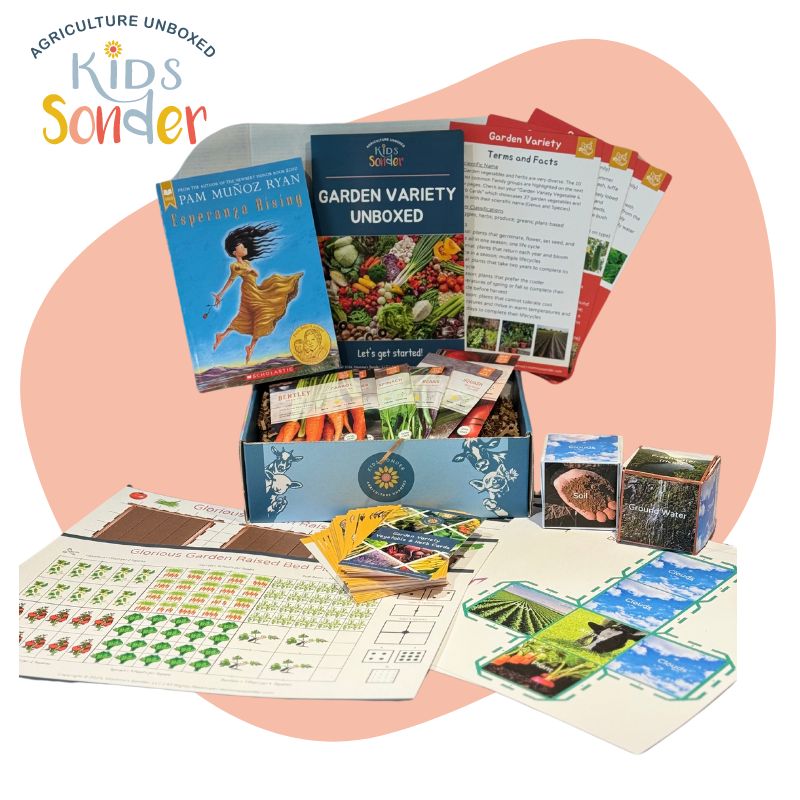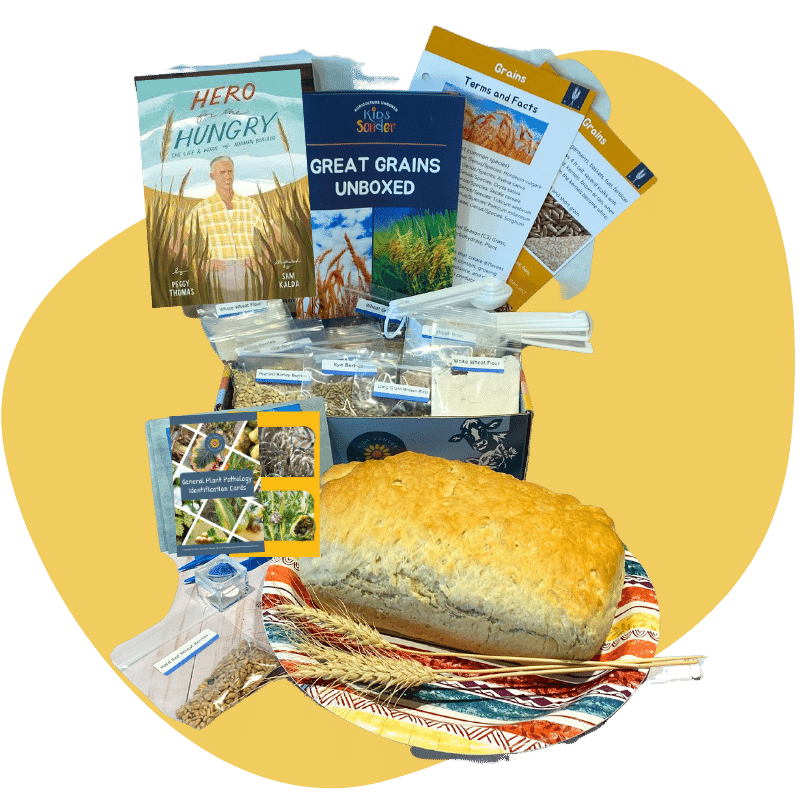October is packed with incredible opportunities for parents and educators to engage kids in exploring agriculture, food systems, and the environment. These themes help deepen kids’ understanding of where their food comes from, the importance of sustainable practices, and how they can play a role in preserving the environment.
Here’s a look at some of the key month, week and day themes in October that focus on agriculture, food, and the environment—and how you can use them to teach and inspire kids ages 9 and above.
1. National Farm to School Month
What It’s About: Established in 2010, National Farm to School Month celebrates the connection between local food producers and schools. It highlights efforts to bring fresh, locally sourced foods into cafeterias and educate students about where their food comes from. The movement supports local economies while encouraging healthy eating and agricultural literacy among students.
Activity Ideas:
- Farm to Plate Activity: Help kids trace the journey of their food from local farms to their plates. Visit a local farm or farmers’ market and ask them to identify foods they find in their school lunch.
- Classroom Garden: Start a small classroom or co-op garden. Kids can plant, grow, and harvest fruits and vegetables while learning about the local food systems that supply their school.
- Recipe Challenge: Have your family or students create healthy recipes using only locally grown ingredients and share them with classmates.
2. National Apple Month
What It’s About: Apples are one of the most iconic and economically significant crops in the United States. National Apple Month, originally started as National Apple Week in 1904, celebrates the apple harvest and highlights the importance of apples to the agricultural economy. It encourages consumers to enjoy a variety of apple products while promoting the health benefits of apples.
Activity Ideas:
- Apple Tasting: Set up an apple tasting with different varieties like Honeycrisp, Fuji, and Granny Smith. Have kids compare taste, texture, and origin while learning about apple farming.
- Orchard Visit: Organize a visit to a local apple orchard where kids can learn about the life cycle of apple trees, harvesting techniques, and apple varieties.
- Apple Art: Let kids use apples to make stamps for painting or crafting. Discuss the different parts of the apple as they work.
3. National Pork Month
What It’s About: Known as “Porktober,” National Pork Month is a time to celebrate the pork industry, honor pig farmers, and recognize the role pork plays in the American diet. It educates consumers on how pork is raised and produced while promoting the industry’s dedication to sustainability, food safety, and animal welfare.
Activity Ideas:
- Virtual Farm Tour: Show kids a virtual tour of a pig farm to help them understand what goes into raising pigs sustainably.
- Farm-to-Fork Lesson: Have kids explore how pork products are produced, from raising pigs to processing and packaging pork.
- Pig Care Simulation: Create a game or simulation where kids are responsible for “raising” virtual pigs, considering factors like feeding, housing, and health care.
4. National Seafood Month
What It’s About: National Seafood Month focuses on the importance of sustainable seafood practices and the need to protect marine ecosystems. The month-long celebration educates consumers about the benefits of seafood in their diets and raises awareness of the environmental challenges related to overfishing, pollution, and climate change.
Activity Ideas:
- Marine Ecosystem Exploration: Teach kids about the importance of healthy oceans by exploring marine ecosystems and the role of fish and seafood in our diet.
- Sustainable Seafood Recipes: Encourage parents to prepare a simple, kid-friendly seafood recipe and talk about the importance of choosing sustainably sourced seafood.
- Ocean Pollution Experiment: Conduct an experiment showing how pollution affects marine life and discuss ways to protect marine ecosystems.
5. National Mushroom Month
What It’s About: Mushrooms are a highly sustainable and nutrient-rich food source, and National Mushroom Month celebrates the cultivation and consumption of mushrooms in the U.S. It highlights the versatility of mushrooms in cooking and emphasizes their role in sustainable agriculture, as they require minimal space, water, and energy to grow.
Activity Ideas:
- Grow Your Own Mushrooms: Set up a mushroom-growing kit and let kids observe the process of how mushrooms grow from spores.
- Fungi Exploration: Have kids research the role of fungi in ecosystems and how mushrooms contribute to decomposing plant material, enriching soil for agriculture.
- Mushroom Cooking Class: Work with kids to prepare simple mushroom dishes and talk about the nutritional benefits of mushrooms.
6. World Food Day (October 16)
What It’s About: Established by the United Nations’ Food and Agriculture Organization (FAO) in 1945, World Food Day aims to raise awareness about global hunger, food security, and sustainable agricultural practices. It encourages individuals, communities, and nations to take action to ensure that everyone has access to nutritious food.
Activity Ideas:
- Global Food Challenge: Assign kids a country and have them research food systems, agriculture, and hunger issues in that country. Discuss how food security impacts communities worldwide.
- Food Drive: Organize a local food drive with kids to help support families in need while discussing the importance of food access and sustainability.
- Grow a Food Garden: Start a small food garden with kids to show how food can be grown locally to help combat hunger.
7. National Farmer’s Day (October 12)
What It’s About: National Farmer’s Day celebrates the hard work and dedication of farmers who produce the food and materials we use daily. It’s a time to recognize their role in feeding the world and sustaining rural communities. The day encourages everyone to thank farmers for their contributions to society.
Activity Ideas:
- Thank a Farmer Project: Have kids write thank-you notes or create artwork expressing gratitude to local farmers. Deliver the notes to a nearby farm or share them online.
- Farm Field Trip: Organize a visit to a local farm so kids can experience firsthand the work that goes into food production. Allow them to ask questions about farming practices.
- Farm Simulation Game: Create a game where kids manage a virtual farm, making decisions about crops, livestock, and sustainability, simulating real farm management.
8. National Pasta Month
What It’s About: Pasta is a beloved staple in diets around the world, and National Pasta Month celebrates its versatility, history, and nutritional value. It highlights the role of grains in agriculture and the importance of wheat farming in producing pasta, an essential component of many family meals.
Activity Ideas:
- Pasta Making at Home: Teach kids how to make fresh pasta from scratch. Discuss the wheat farming process and how grains are turned into flour and then into pasta.
- Pasta World Tour: Have kids research pasta dishes from different countries (e.g., spaghetti from Italy, ramen from Japan) and explore the agricultural differences in wheat farming around the world.
- Pasta Shapes Craft: Let kids create art with different pasta shapes, exploring the history and culture behind pasta-making.
9. National Pumpkin Month
What It’s About: Pumpkins are an iconic symbol of fall and an important crop in U.S. agriculture. National Pumpkin Month celebrates pumpkin farming, their nutritional benefits, and their environmental impact. Pumpkins are a low-input crop, requiring minimal resources to grow, making them a sustainable food source.
Activity Ideas:
- Pumpkin Patch Field Trip: Visit a local pumpkin patch, where kids can pick pumpkins and learn about how pumpkins are grown, harvested, and used in food products.
- Pumpkin Science: Set up a pumpkin dissection station where kids can explore the inside of a pumpkin, count seeds, and discuss the growing process from seed to harvest.
- Pumpkin Cooking: Prepare pumpkin recipes, like roasted seeds or pumpkin pie, and discuss the nutritional benefits of pumpkins as part of a healthy diet.
Engaging Kids in Agricultural Learning
By using these October themes, parents and educators can immerse kids in hands-on activities that tie agriculture, food systems, and environmental education together. Whether it’s through visiting a farm, growing food at home, or researching global food systems, these experiences will inspire kids to appreciate the role agriculture plays in their lives and the importance of sustainable practices.
Each observance offers a fun and educational opportunity to teach youth about the impact of agriculture and the environment on their communities and the world.










